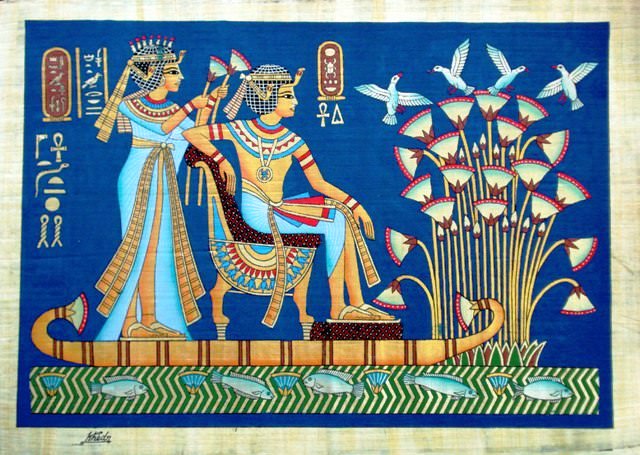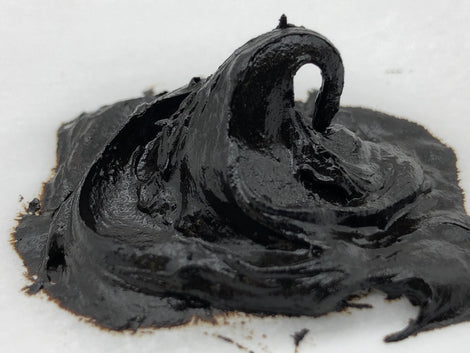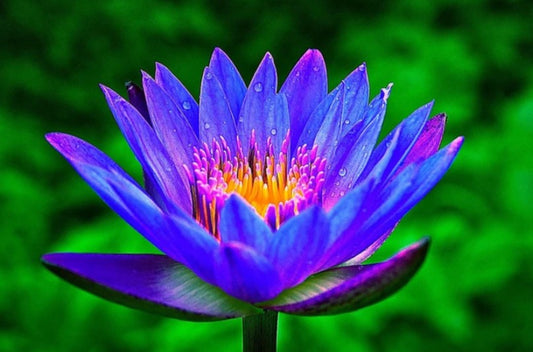
Blue Lotus Flower: The Aphrodisiac Water Lily
Jack DelamaterShare
And there you have it. Ancient Egypt's favorite love potion right there in all its glory. It has a fragile and ephemeral aura that would seem more at place in an innocent bouquet than directly in the center of the Egyptian orgy scene. The flower provides a relaxing effect while slipping the consumer into a sensual, dreamy state. The blue lotus flower is a dishonest mistress as well; posing in pop culture as a 'lotus flower' when it is in reality a lily. Along the Nile River, these lily flowers were and are a common occurrence. They grow just as quickly and easily as the user after its consumption.
Due to the ancient culture's propensity for wild parties and orgies (based on papyrus pornography left behind), this common flower was the inevitable and obvious choice for a party drug.
I mean... They really got it- these shindigs must have been completely insane. As you can see, almost all of these orgy-patrons are surrounded by blue lotus flowers. I'd like to say that if I had one chance to utilize a time machine, I'd use the opportunity to undo a horrible tragedy. Realistically though, I'd probably try to find the details and address of this exact party.
The Egyptians clearly knew what was up- they ingested the blue lotus by soaking it in wine for weeks, and then drinking the infused concoction.
So what the hell is in it?
[Aporphine]
Blue Lotus contains a host of alkaloids, though the main compounds are nuciferine and aporphine. Aporphine takes the center stage when it comes to the mild psychoactive effects of the plant due to its antagonistic activity on the D1 and D2 dopamine receptors. Blue Lotus exhibits some serious anti-convulsive and antipsychotic activity. This antipsychotic activity differentiates it from the THC high, which can cause anxiety and psychotic-like experiences. Blue lotus hits the other side of the spectrum, making one feel entirely comfortable and relaxed while also sensual with a dreamy flare. There are no known overdoses and the plant isn't toxic, making it a pretty safe deal as far as aphrodisiacs go. Blue lotus is also famously known for its potentiating effect on dreams, allowing the user to explore the dream state more vividly and with more awareness than ever before.
How do I take it?
As I said before, the Egyptians used to infuse wine with the flower for the ultimate party experience. For casual use however, it is most common to simply steep the pedals in hot water like any other herbal tea. The flower can also be grinded and smoked in a joint, bowl, or waterpipe. It is known to be a great addition to marijuana, helping to compensate for THC's known effect of reducing REM sleep. Both smoking the flower and drinking the tea produce the similar effects. The effects from the tea tend to last longer while smoking results in a more immediate, short lived euphoria. It is best to take either at night before bed so that the dream-potentiating effects can be fully experienced.
The blue lotus flower was not all fun and sex games in ancient Egypt. This herbal tea seems to be steeped deep within the soil of Egyptian culture, making an appearance in both mythological and spiritual domains. The blue lotus was extremely significant and regarded as a symbol of the sun, as the flowers open in the morning and close at night. In the city of Heliopolis, the world was said to originate when Ra, the sun god, emerged from a lotus flower growing in "primordial waters". Many pharaohs' mummies were also covered with the dried petals of the flower. Since this flower has been grown in special farms for over 4000 years, it clearly carried much spiritual weight.
So if you're thinking of trying out something new without risking your health, the blue lotus flower is a great option that can spark up your dreams as well as your sensual life, or perhaps could just be the perfect tool to initiate the lazy day on a hammock that you know you deserve.
Jack Delamater
The Dream Joint


